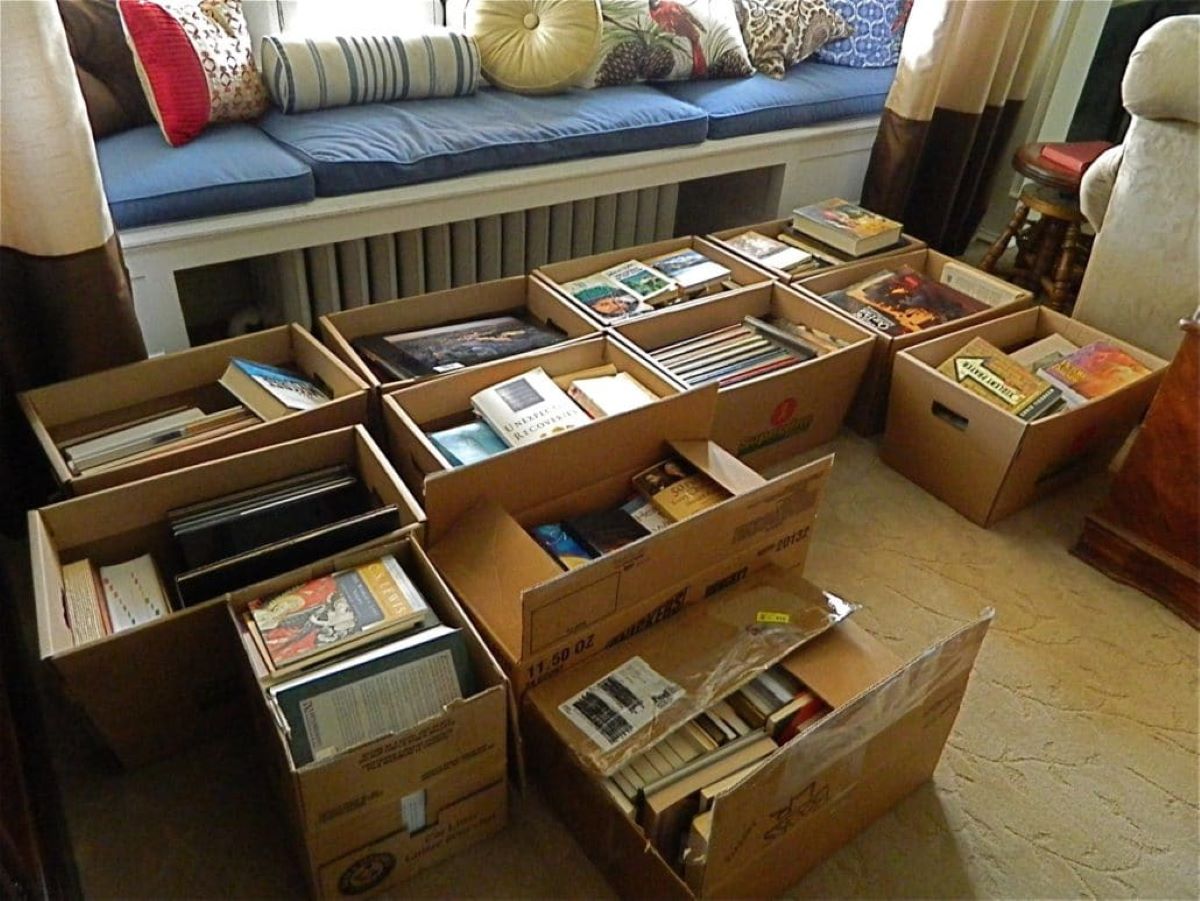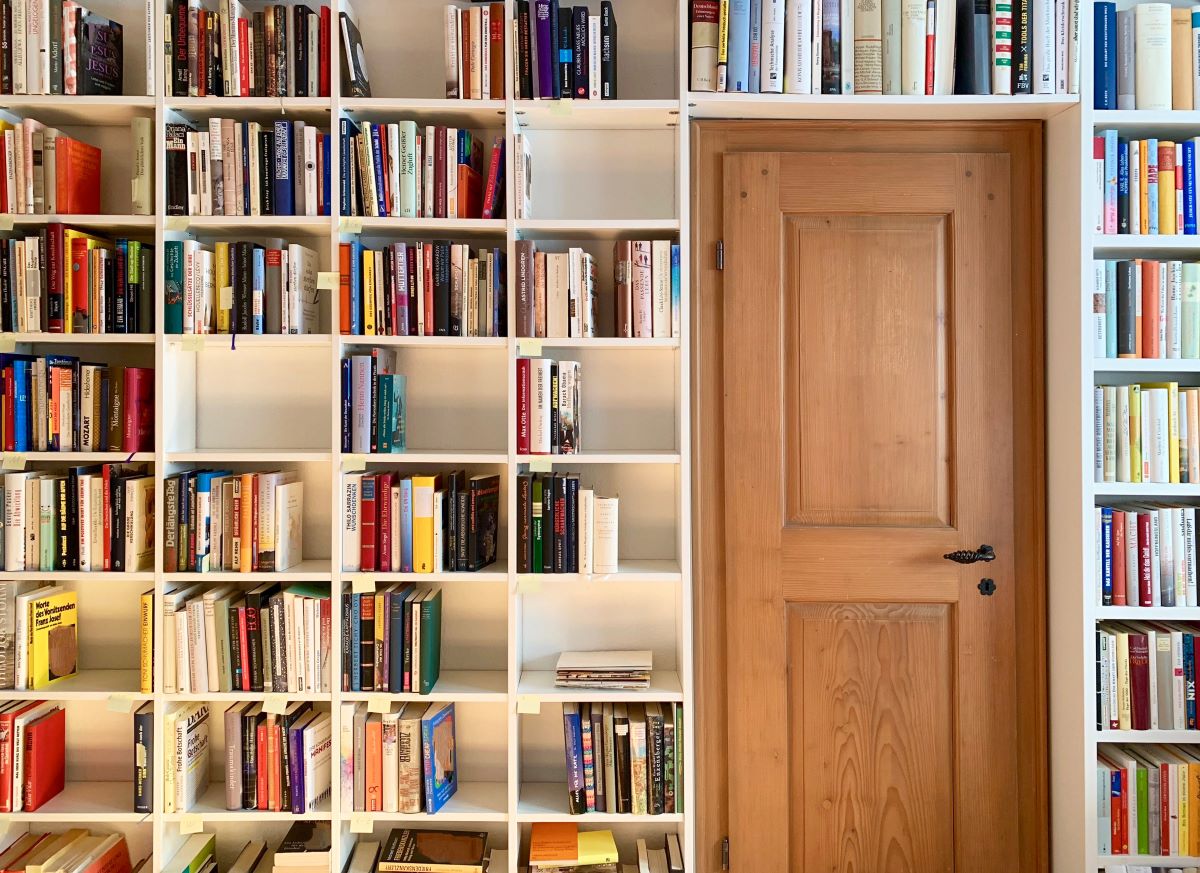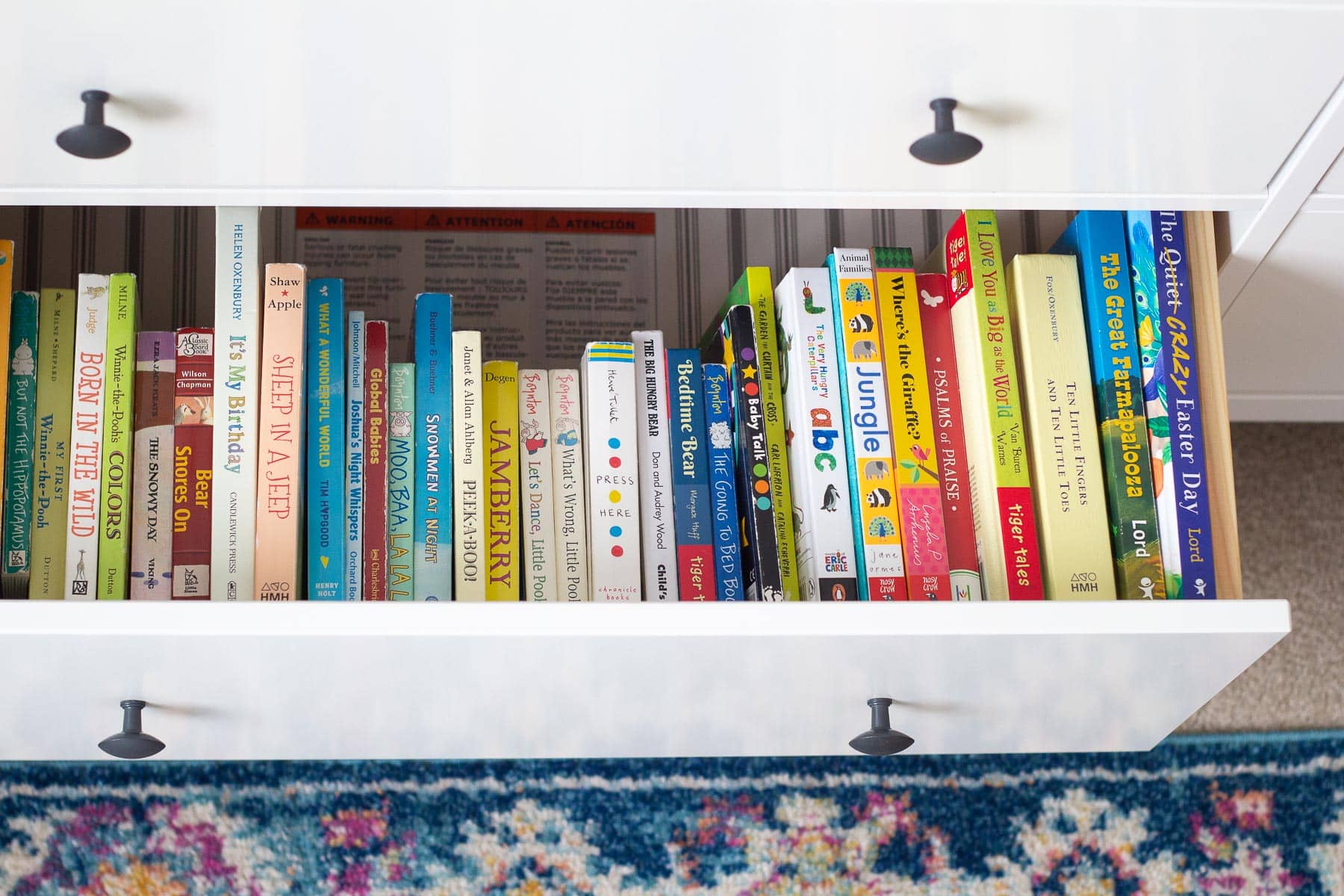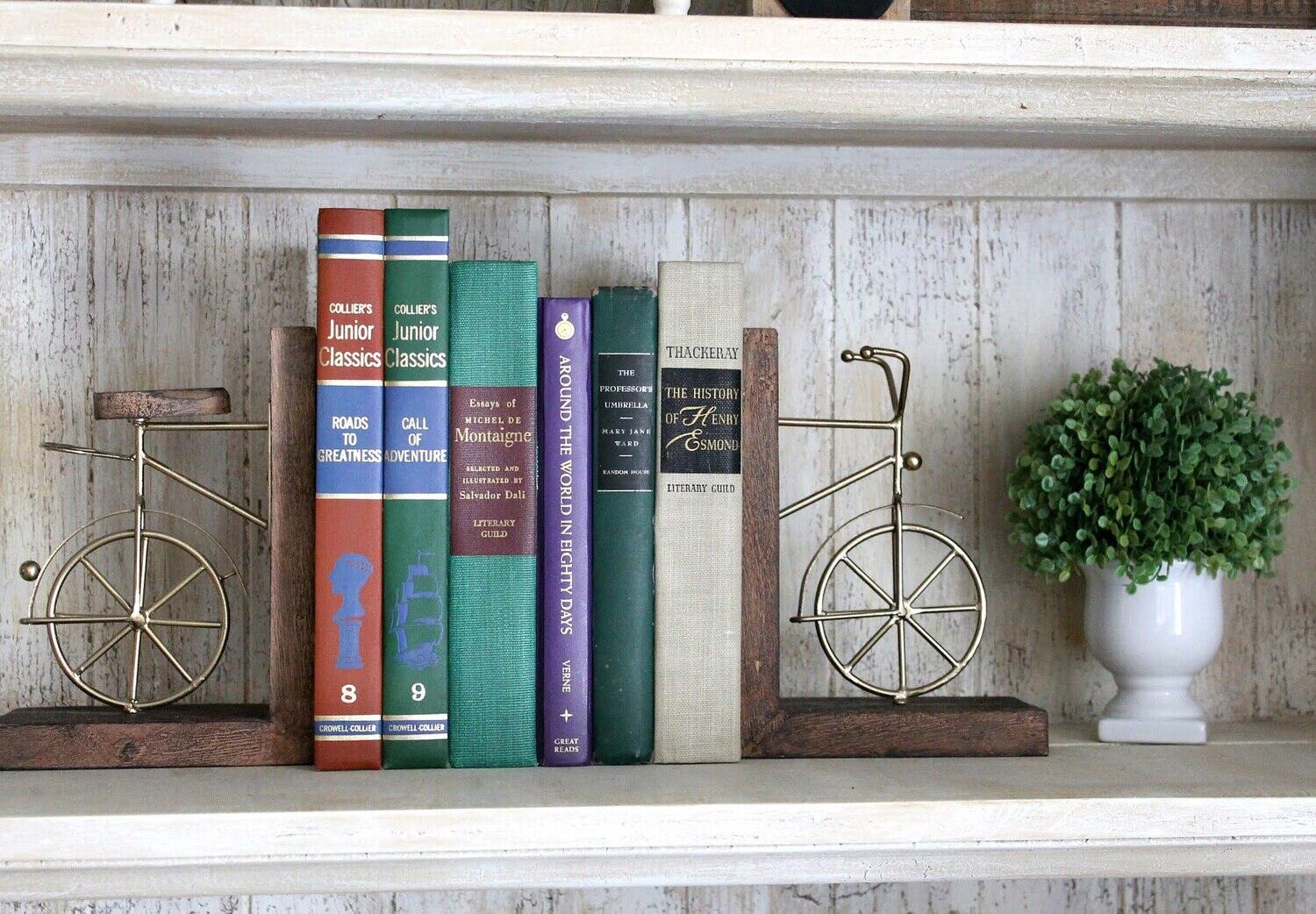

Articles
How To Store Books In A Damp Basement
Modified: May 6, 2024
Learn how to properly store books in a damp basement with these helpful articles. Protect your books from moisture and ensure their longevity.
(Many of the links in this article redirect to a specific reviewed product. Your purchase of these products through affiliate links helps to generate commission for Storables.com, at no extra cost. Learn more)
Introduction
Having a basement can be a great asset for any home. It provides extra space for storage, recreational activities, or even a cozy living area. However, if your basement is damp, it can be a challenging environment for storing your belongings, especially delicate items like books. Excessive moisture in the air can lead to mold, mildew, and water damage, which can ruin your precious book collection.
In this article, we will discuss how to store books in a damp basement effectively. We will explore the steps to assess the conditions, prepare the basement, choose the right storage solutions, properly package the books, create a humidity control system, monitor and maintain the storage area, regularly inspect and clean the books, and prevent pest infestations.
By following these guidelines, you can ensure the longevity and preservation of your books, even in a damp basement environment. Let’s dive in!
Key Takeaways:
- Protect your books in a damp basement by assessing conditions, preparing the space, choosing the right storage solutions, and creating a humidity control system. Regular monitoring and cleaning are essential for long-term preservation.
- Safeguard your book collection in a damp basement by properly packaging books, preventing pest infestations, and implementing regular inspections and maintenance. With the right strategies, your books can withstand the challenges of a moisture-prone environment.
Read more: How To Store Things In A Damp Basement
Assessing the Conditions
The first step in storing books in a damp basement is to assess the current conditions. This will help you understand the level of moisture and humidity present in the space and determine if any additional measures are needed to protect your books.
Start by inspecting the walls, floor, and ceiling for any signs of water damage or moisture. Look for discoloration, peeling paint, or visible mold growth. If you notice any of these signs, it is important to address the underlying moisture issue before proceeding with storing your books.
Next, measure the humidity levels in the basement using a hygrometer. Ideally, the humidity should be between 30% to 50% for book storage. Anything above 50% can create a conducive environment for mold and mildew growth. If the humidity levels are consistently high, you may need to implement a humidity control system, which we will discuss later in this article.
Consider the overall ventilation in the basement. Poor air circulation can contribute to moisture buildup. Ensure that there are enough vents or windows to allow for fresh air to flow in and out of the space. If needed, you can install a dehumidifier or use fans to improve air circulation.
Lastly, assess the location of your books within the basement. Avoid placing them directly on the floor or against the walls, as these areas are more prone to moisture. Instead, elevate the books on shelves or use pallets to create a barrier between the books and the potentially damp surface.
By thoroughly assessing the conditions in your basement, you can address any existing moisture issues and make informed decisions on how to best store your books.
Preparing the Basement
Before you start storing your books in a damp basement, it’s crucial to properly prepare the space. Taking the necessary steps to create a clean and safe environment will help protect your books from moisture and potential damage.
Begin by thoroughly cleaning the basement. Remove any dust, dirt, or debris that may have accumulated over time. Use a broom or vacuum cleaner to sweep the floors and walls, paying special attention to corners and crevices where moisture can hide. Wipe down surfaces with a damp cloth to ensure they are free of any residue.
Inspect the basement for any structural issues that may contribute to moisture problems. Check for cracks in the walls or foundation that could let water seep in. Seal any gaps or cracks using an appropriate waterproofing sealant to prevent water intrusion.
If you have windows in your basement, ensure they are tightly sealed and don’t allow water to leak inside during heavy rain or high humidity. Consider installing window well covers to provide an added layer of protection against water and debris.
Once the basement is clean and structurally sound, consider applying a waterproofing paint or coating to the walls and floor. These products create a protective barrier, preventing moisture from seeping through the surfaces. Follow the manufacturer’s instructions for proper application.
If you live in an area prone to flooding or excessive moisture, it may be wise to install a sump pump in your basement. A sump pump helps remove water that accumulates in the basement, reducing the risk of water damage to your books.
Lastly, ensure that your basement has proper insulation. Insulating the walls and ceiling can help regulate temperature and minimize condensation, reducing the chances of humidity-related issues. Consult with a professional if you are unsure about the insulation requirements for your basement.
By properly preparing your basement, you create a clean and controlled environment that is more suitable for storing books. Taking these steps will help minimize the impact of dampness and protect your valuable book collection.
Choosing the Right Storage Solutions
Selecting the appropriate storage solutions for your books in a damp basement is crucial to their preservation. The right choices will help protect your books from moisture, mold, and other potential damage. Here are some key considerations when choosing storage options:
- Bookshelves: Invest in sturdy, moisture-resistant bookshelves that can elevate your books off the floor. Look for shelves made of materials like metal or plastic, as they are less susceptible to moisture absorption. Avoid wooden shelves, as they can warp and rot in a damp environment.
- Plastic bins: Consider using plastic bins with tight-fitting lids to store books. These bins provide an added layer of protection against moisture and can be easily stacked, saving space in your basement. Make sure to label the bins to easily locate specific books when needed.
- Air-tight bags: For valuable or delicate books, consider using air-tight bags made of polyethylene or mylar. These bags create a seal around the books, protecting them from moisture and minimizing the risk of damage. Be sure to remove as much air as possible before sealing the bags.
- Book stands: Use book stands or bookends to keep your books upright on the shelves. This prevents them from leaning or bending, which can damage the spines over time.
When arranging your books on bookshelves, try to leave some space between each book. This allows for better air circulation and reduces the risk of moisture getting trapped between the books. Avoid overcrowding the shelves, as it can make it difficult to retrieve books and increase the chances of damage during handling.
It’s also important to consider the placement of your book storage in the basement. Avoid placing shelves directly against exterior walls, where moisture may be more likely to penetrate. Instead, position them towards the center of the room to minimize exposure to potential moisture sources.
Keep in mind that while proper storage solutions can reduce the risk of moisture damage, they are not foolproof. Regular monitoring of the storage area and implementing additional humidity control measures, as we will discuss later, are still necessary for ultimate book preservation.
By carefully selecting the right storage options, you can significantly minimize the risk of moisture damage and ensure the longevity of your beloved book collection.
Properly Packaging Books
When it comes to storing books in a damp basement, proper packaging is essential for their protection. Using the right materials and techniques will help safeguard your books from moisture, mold, and other potential damage. Here are some guidelines for properly packaging your books:
- Book covers: Consider covering your books with dust jackets or book covers. These additional layers provide an extra level of protection against dust, dirt, and moisture.
- Acid-free materials: Use acid-free archival-quality materials for packaging, such as acid-free book sleeves, tissue paper, or acid-free cardboard inserts. Acidic materials can cause degradation and discoloration over time.
- Plastic book sleeves: For added protection, place individual books in plastic book sleeves. These sleeves create a barrier against moisture and can prevent the transfer of oil and dirt from your hands onto the book covers.
- Silica gel packets: Place silica gel packets inside the packaging to absorb any excess moisture. Silica gel is a desiccant that helps maintain a dry environment around the books. Replace the packets periodically or when they become saturated.
- Avoid plastic bags: While it may be tempting to use plastic bags for packaging, they can actually trap moisture and lead to mold growth. Opt for breathable materials like paper or cloth instead.
When packaging books, be gentle and handle them with clean hands, as oils and dirt can transfer onto the pages. Avoid using adhesive tapes or rubber bands directly on the books, as they can cause damage or leave residue over time.
If you have valuable or rare books, consider consulting with a professional book conservator for advice on specialized packaging and preservation techniques. They can provide tailored recommendations to ensure the long-term protection of your valuable literary treasures.
Remember to label each package or sleeve to easily identify the contents without the need to handle and disturb the books frequently.
Properly packaging your books will help minimize the risk of moisture damage and ensure their longevity. By paying attention to details and using appropriate materials, you can protect and preserve your beloved books in a damp basement environment.
Store books in a damp basement by using a dehumidifier to reduce moisture levels, placing books on raised shelves to prevent contact with the floor, and using silica gel packets to absorb excess moisture.
Read more: How To Store Books In Basement
Creating a Humidity Control System
Controlling humidity is crucial when storing books in a damp basement. Excessive moisture in the air can lead to mold growth, deterioration of paper, and damage to your book collection. Here are some steps to create a humidity control system:
- Dehumidifier: Install a dehumidifier in your basement to regulate the humidity levels. Choose a dehumidifier with a capacity suitable for the size of your basement. Set the humidity level to the recommended range of 30% to 50%. Regularly empty and clean the dehumidifier as per the manufacturer’s instructions.
- Seal cracks and leaks: Inspect the basement for any cracks or gaps where moisture may enter. Use caulk or sealant to seal any openings. This helps prevent additional moisture from infiltrating the space.
- Insulate pipes: If you have pipes running through your basement, insulate them to prevent condensation. Pipe insulation can help reduce moisture in the air and contribute to overall humidity control.
- Ventilation: Improve air circulation in the basement by utilizing fans or opening windows when weather conditions permit. This allows fresh air to enter and helps eliminate stagnant, moisture-laden air.
- Use moisture absorbers: Place moisture absorbers, such as silica gel packets or desiccant packs, in strategic locations around the basement. These can help absorb excess moisture in the air and minimize humidity levels.
- Monitor humidity levels: Regularly monitor the humidity levels in your basement using a hygrometer. This will help you stay aware of any changes and adjust your humidity control measures accordingly.
It’s important to note that achieving a completely moisture-free environment is often challenging in a damp basement. The goal should be to maintain humidity within an acceptable range to minimize the risk of damage to your books.
Remember to check and address any visible signs of mold or mildew promptly. If mold growth is present, it’s crucial to address the underlying moisture issue and clean the affected area thoroughly to prevent further damage to your books.
A comprehensive humidity control system, combined with other storage measures mentioned earlier, will help create a stable and suitable environment for your book collection in a damp basement.
Monitoring and Maintaining the Storage Area
Monitoring and maintaining the storage area in your damp basement is essential to ensure the ongoing protection and preservation of your books. By regularly checking the conditions and implementing preventive measures, you can minimize the risk of damage caused by moisture and other potential hazards. Here are some guidelines for monitoring and maintaining the storage area:
- Regular inspections: Conduct regular inspections of the storage area to check for signs of moisture, mold, or pest infestations. Look for any visible mold growth, musty odors, or damaged books. Address any issues immediately to prevent further damage.
- Temperature control: Maintain a relatively stable temperature in the basement. Fluctuations in temperature can create condensation, leading to increased moisture levels. Avoid storing books near heating or cooling appliances, as these can cause rapid temperature changes.
- Air circulation: Ensure proper air circulation in the storage area. Avoid blocking vents or windows, as this can hinder airflow. Use fans or open windows periodically to refresh the air and reduce moisture buildup.
- Regular cleaning: Clean the storage area regularly to minimize dust and dirt accumulation. Dust, dirt, and debris can trap moisture and potentially damage your books. Wipe down shelves, inspect for any signs of mold growth, and vacuum or sweep the floor to keep the area clean.
- Address leaks promptly: If you notice any leaks or water intrusion in the basement, address them promptly. Repairing leaks and addressing the underlying issue will help prevent water damage to your books and maintain a dry storage environment.
- Rotate books: Occasionally rotate the books on the shelves to prevent prolonged exposure to one area. This helps distribute any potential moisture more evenly and reduces the risk of damage.
Additionally, maintain a record or inventory of your book collection. This serves as a reference and allows you to track the condition of each book over time. Regularly update the inventory and note any changes or issues you may observe during the monitoring process.
By actively monitoring and maintaining the storage area, you can identify and address any potential issues before they cause significant damage to your book collection. Regular attention and care will ensure the longevity and preservation of your beloved books in a damp basement environment.
Regularly Inspecting and Cleaning the Books
Regular inspections and cleaning of your books are essential to maintain their condition and preserve their longevity, especially when stored in a damp basement. By following proper inspection and cleaning practices, you can identify and address any issues promptly, preventing further damage and ensuring the quality of your collection. Here are some guidelines for regularly inspecting and cleaning your books:
- Visual inspection: Regularly examine your books for signs of damage, such as water stains, mold growth, or insect infestation. Pay close attention to the corners, edges, and bindings. Address any visible issues immediately to prevent further deterioration.
- Handling with clean hands: Handle the books with clean hands to minimize the transfer of oils and dirt onto the pages. Wash your hands thoroughly before touching the books to avoid introducing contaminants.
- Use a soft brush: Gentle brushing with a soft, clean brush can help remove surface dust and dirt from the books. Use a soft-bristled brush, like a clean makeup or paintbrush, and gently brush the pages and covers.
- Spot cleaning: If you come across any stains or spots on the pages, use a small piece of dry and clean white cloth or art gum eraser to gently blot or erase the blemishes. Avoid using liquids or strong cleaning agents, as they can cause damage.
- Book repair: If you notice any torn or loose pages, consider consulting a professional book conservator or using conservation-grade materials for repairs. Improper repairs can cause further damage, so it’s best to seek expert advice when it comes to book restoration.
- Storage adjustments: During the inspection, evaluate the storage conditions and make any necessary adjustments. Ensure that the books are properly positioned on the shelves, free from excessive pressure or tight packing.
- Protective covers: Consider using protective covers or archival book sleeves to further protect your books. These protective covers can shield the books from dust, moisture, and light exposure.
It’s important to note that any specialized or intensive cleaning should be left to professional book conservators. They have the expertise and knowledge to handle delicate or valuable books and perform in-depth cleaning procedures if necessary.
By regularly inspecting and cleaning your books, you can maintain their pristine condition and prevent further damage. These practices contribute to the long-term preservation of your collection, even when stored in a damp basement.
Preventing Pest Infestations
Pests can pose a significant threat to your books when stored in a damp basement. Insects like silverfish, booklice, and beetles are attracted to the cellulose found in paper, making your books susceptible to damage. To protect your collection from pest infestations, it’s crucial to implement preventive measures. Here are some guidelines to prevent pest infestations in your basement:
- Regular cleaning: Keep the storage area clean and free from crumbs, food debris, or other organic matter that can attract pests. Vacuum or sweep the floor regularly, paying attention to corners and crevices.
- Seal entry points: Inspect the basement for any cracks, gaps, or openings that pests could use to enter. Seal these entry points with caulk or other appropriate sealants to prevent pests from infiltrating the space.
- Avoid storing food: Do not store food items in the basement, as they can attract pests. Even non-perishable food items can attract insects and rodents, which can then cause damage to your books.
- Store books in sealed containers: If you have concerns about pests, consider storing your books in sealed plastic bins or containers. This provides an added layer of protection against insects and rodents.
- Inspect incoming books: Before introducing new books into your collection, carefully inspect them for any signs of pest activity. Look for insect eggs, droppings, or chewed edges. Quarantine new books if you suspect any infestation until you can address the issue.
- Avoid using pesticides: It’s generally not recommended to use pesticides directly on your books, as they can be harmful and may leave residue. Instead, focus on preventive measures and consult a professional exterminator if you have a persistent pest problem.
- Air circulation: Maintain proper ventilation and air circulation in the basement. Good airflow can help discourage pests from settling in the area.
If you do discover signs of pests in your books, it’s crucial to take immediate action. Isolate the affected books to prevent the infestation from spreading to others. Consult with a professional book restorer or conservator to determine the most appropriate method for treating and eradicating the pests.
By implementing these preventive measures and staying vigilant, you can significantly reduce the risk of pest infestations and protect your book collection in a damp basement environment.
Read more: How To Store Books In Bedroom
Conclusion
Storing books in a damp basement can be challenging, but with the right strategies, you can protect and preserve your beloved book collection. By thoroughly assessing the conditions, preparing the basement, choosing the right storage solutions, properly packaging books, creating a humidity control system, monitoring and maintaining the storage area, regularly inspecting and cleaning the books, and preventing pest infestations, you can mitigate the risks associated with moisture and ensure the longevity of your books.
Assessing the conditions in your basement helps you understand the level of moisture present and address any underlying issues. Properly preparing the basement by cleaning, sealing, and insulating helps create a suitable storage environment. Choosing the right storage solutions, such as moisture-resistant bookshelves or plastic bins, elevates the books off the ground and provides added protection against dampness. Properly packaging books using acid-free materials, plastic covers, and silica gel packets helps safeguard them from moisture and other potential damage.
Creating a humidity control system with the use of dehumidifiers, moisture absorbers, ventilation, and regular monitoring assists in maintaining an optimal humidity level for book storage. Regularly inspecting and cleaning the storage area helps identify and address any potential issues before they worsen. Furthermore, regular inspections and gentle cleaning of the books themselves allow you to protect them from dust, dirt, and potential damage.
Finally, preventing pest infestations is key in preserving your books. By keeping the storage area clean and sealed, avoiding the storage of food, inspecting incoming books, and maintaining proper air circulation, you can significantly reduce the risk of pests damaging your collection.
Remember, while these strategies can greatly minimize the risks associated with storing books in a damp basement, it’s important to continuously monitor and adapt as necessary based on the specific conditions of your basement and the needs of your book collection. By implementing these guidelines, you can ensure that your books remain in excellent condition, ready to be enjoyed for years to come.
Got a passion for preserving your precious reads? You'll find our next guide on the latest book storage solutions indispensable. We delve into stylish, practical options that keep your literature safe and sound. Wondering about your basement's condition? Our in-depth look into basement waterproofing details effective methods to keep that space dry and secure. Both articles are packed with tips to elevate your home care routine.
Frequently Asked Questions about How To Store Books In A Damp Basement
Was this page helpful?
At Storables.com, we guarantee accurate and reliable information. Our content, validated by Expert Board Contributors, is crafted following stringent Editorial Policies. We're committed to providing you with well-researched, expert-backed insights for all your informational needs.














0 thoughts on “How To Store Books In A Damp Basement”